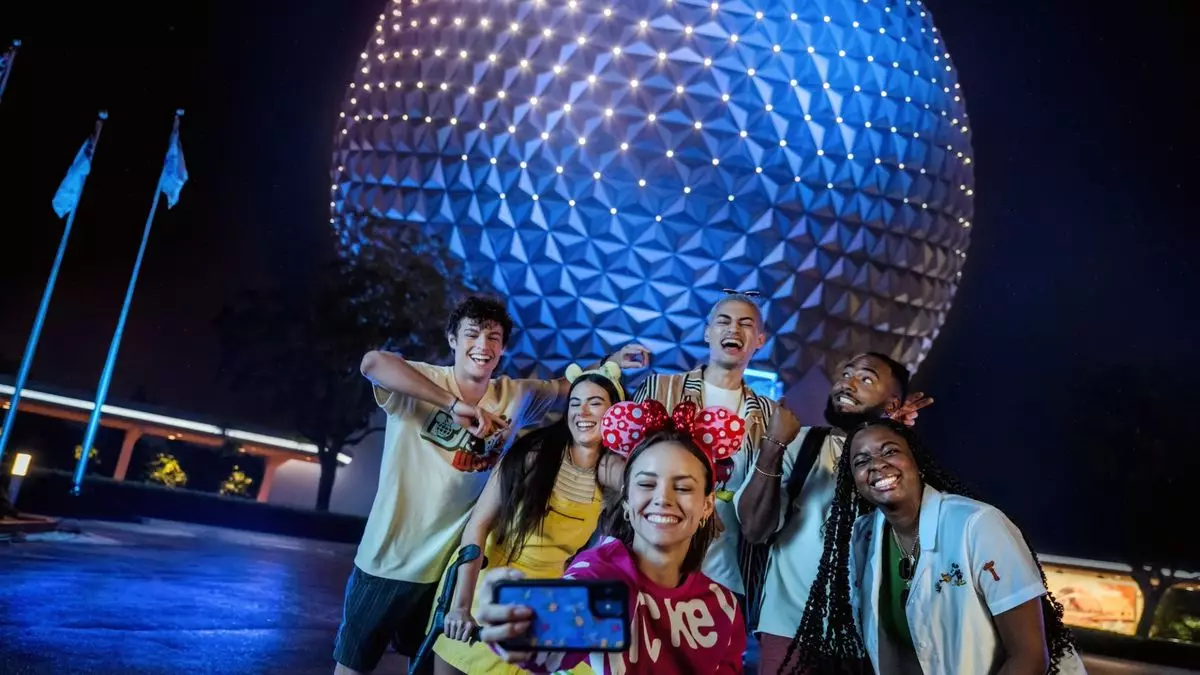Disney has made a strategic move in the realm of theme park admissions with the introduction of the Lightning Lane Premier Pass, aimed at enhancing the guest experience by offering expedited access to attractions. Initially launched in October of last year, the Lightning Lane Premier Pass targets a premium audience looking for a seamless park visit. While available to all guests, the preferential treatment given to those staying at Disney-affiliated hotels allows the company to maintain control and manage the flow of visitors effectively.
Disney’s approach to the Lightning Lane Premier Pass has been notably conservative. The pass is available to hotel guests a week prior to their stay—offering them a significant advantage in purchasing—and is released to other park visitors just three days before their visits. This staggered release not only drives demand but also protects the experience for hotel guests, which is aligned with Disney’s penchant for exclusivity. CFO Hugh Johnston’s comments during the recent fiscal call affirm that Disney’s gradual marketing approach is intentional. By taking these baby steps, Disney aims to understand the new offering fully while ensuring it enhances the overall experience for both Lightning Lane users and other park-goers. This strategy reflects a wider interpretation of customer experience management, where the company’s priority is perceived value over immediate profit maximization.
Understanding the Cost Implications
Cost remains a crucial factor in evaluating the Lightning Lane Premier Pass’s demand and accessibility. The pricing for the pass varies significantly between Walt Disney World Resort and Disneyland Resort, starting at $119 and reaching up to $399 per person, depending on factors such as timing and location. These prices encapsulate Disney’s branding as a premium leisure provider, yet they also signify a barrier to entry for many families. Conventional skip-the-line passes available for one or three attractions leave guests with a choice: commit to a full day of fast access with the Premier Pass or strategize individual rides while potentially wasting precious park time. The tiered pricing strategy appears to delineate Disney’s lucrative target market, yet it also risks alienating budget-conscious visitors who may feel priced out of experiencing what they see as essential—in this case, avoiding long queues.
The financial backdrop presents both challenges and opportunities for Disney, as reflected in its fiscal Q1 results. A modest growth of 3% in revenue, amounting to $9.42 billion for their Disney Experiences segment, underscores the strong demand for themed recreational activities. However, strains caused by natural disasters, resulting in substantial financial losses totalling around $120 million, highlight the precarious nature of the entertainment business. Moreover, expenses linked to new additions like the Disney Treasure, launching in late December, demonstrate that investing in innovation can be costly yet necessary for long-term gain. The industry’s fluctuating performance raises questions about sustainability: Can Disney maintain a profitable trajectory in the face of natural and financial storms while still enhancing guest experiences?
As Disney navigates its challenges, the company simultaneously prepares for milestone celebrations, such as Disneyland’s 70th anniversary and Hong Kong Disneyland’s 20th, which may serve as a catalyst for increased visitor numbers and revenue. Furthermore, with two new cruise ships set to launch within the year, there’s a concerted effort to expand the Disney experience beyond traditional theme parks. The anticipated arrival of the Disney Treasure in particular will enhance Disney’s cruise portfolio, with an optimistic outlook for its initial profitability. These prospects reveal that Disney is not just looking to manage its current offerings but is poised to create new experiences that could reshape customer loyalty and market presence.
Disney’s Lightning Lane Premier Pass serves as a focal point in a larger narrative about premium pricing structures, customer experience, and financial performance in a rapidly evolving entertainment landscape. By cautiously rolling out this offering and understanding the market dynamics, Disney is playing a long game that prioritizes not just immediate revenue influx but also sustainable customer satisfaction. As the company celebrates its history while heading into a promising future, the careful management of its ticketing strategies will determine whether it can continue to captivate audiences and remain a leader in the leisure industry.


Leave a Reply